You may have seen our post on our RV internet solutions which we created to update our readers on the upgrades we made to our tech cabinet. But, while our internet solutions are working very well for us, like many RVers we’re keeping an eye on the developments associated with Starlink RV Internet.
Starlink is an interesting option for RVers, especially those who live and work full-time from their rigs. But despite the many intriguing aspects of Starlink, there are some drawbacks to be aware of.
With that said, let’s take a look at Starlink RV Internet — what it is, how it works, and the pros and cons based on the most recent information.
What Is Starlink RV Internet?
Starlink RV Internet is a low-earth orbit satellite-based internet service. The idea behind it is to create an entire constellation of thousands of small satellites in a low-earth orbit to deliver high-speed internet across the globe, including low-cost internet to remote areas.
Conceptualized by entrepreneur Elon Musk’s aerospace company SpaceX (Space Exploration Technologies, Corp.), the goal was to ultimately have 30,000 – 42,000 satellites in the Starlink mega constellation.
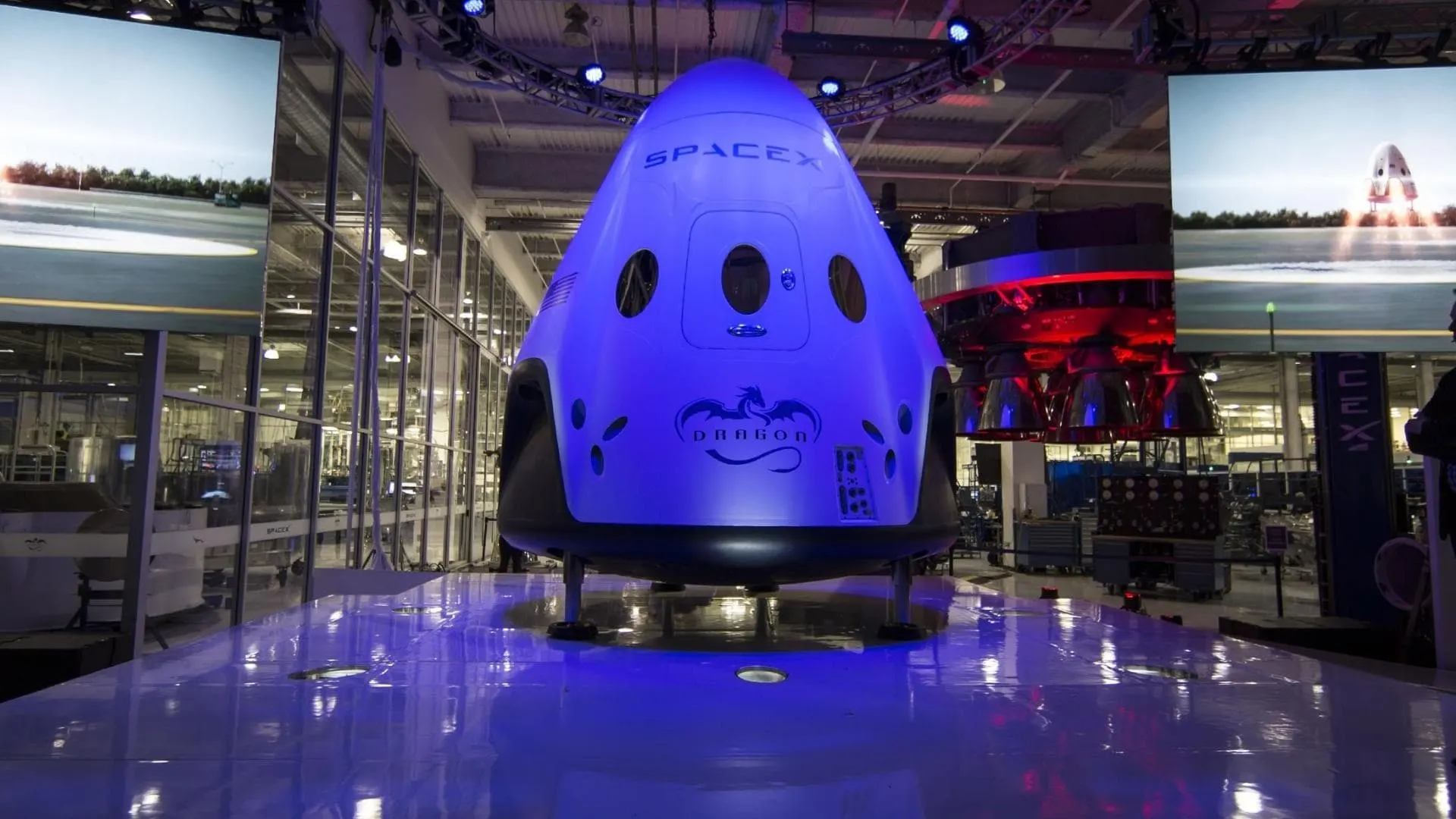
Starlink is a concept involving thousands of satellites in a large constellation, designed by aerospace company SpaceX (Space Exploration Technologies, Corp.). Here you see a photo of the SpaceX Dragon Capsule, the first commercial spacecraft.
Supporters have called the project the greatest innovation of the century, while critics have referred to it as a menace at best. Astronomers fear that the brightly lit satellites will interfere with critical observations of the universe, and flight safety experts see Starlink (the name of the satellite network) as the greatest collision hazard in Earth’s orbit. Scientists have also expressed concerns that the amount of metal that will burn up in the atmosphere from old satellites could cause unforeseeable changes to our climate.
Satellite internet isn’t a new concept. In fact, many RVers (ourselves included) have used satellite internet at some point. But to date, it has been notoriously slow and expensive, and not the best solution for most RVers.
Starlink Internet is very different from the traditional satellite internet many of us have used, though. So, let’s take a look at how it works.
How Does Starlink RV Internet Work?
The most recent version of each Starlink satellite weighs 573 pounds (260 kilograms). A single satellite has been described as being the size of a table – (a HEAVY table!)
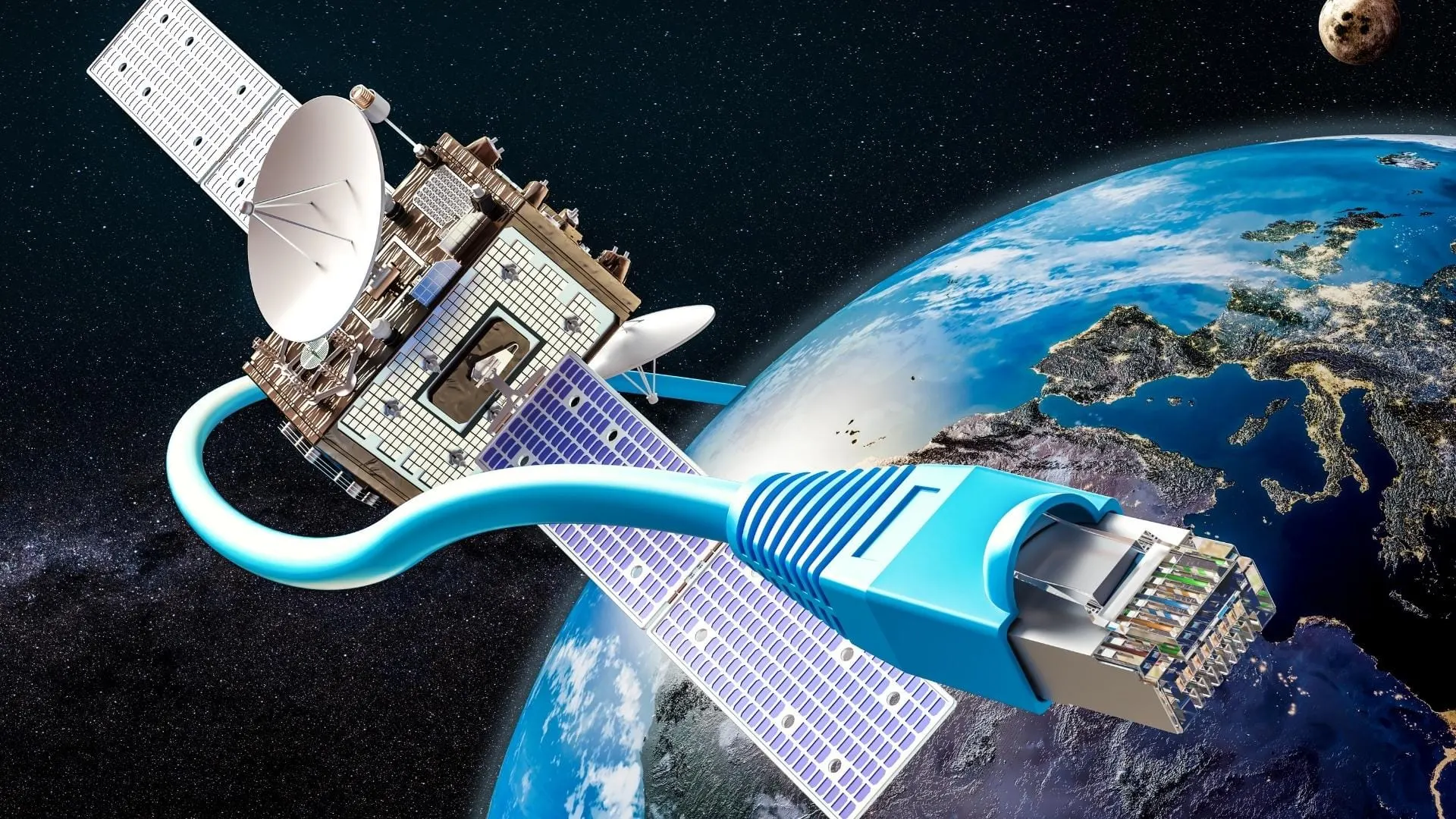
A 3D rendering of a global satellite concept.
Ultimately, SpaceX’s vision is to deploy thousands of satellites in three orbital shells that provide worldwide coverage — perfect for RVers and other travelers. Instead of sending internet signals through cables that need to be physically laid in various places, satellite internet beams information through space, and the information travels 47% faster than it would through a fiber-optic cable.
The satellite internet that we’ve accessed in the past (and perhaps you have as well) worked using large satellites that orbit over 22,000 miles above a particular spot on the planet. However, due to the distance, time delays are experienced while sending and receiving data.
By contrast, Starlink’s satellites, which are situated in much lower orbits closer to the Earth’s surface, can carry information very rapidly to any point on the planet, including over oceans and in highly remote areas where the laying of fiber-optic cables would be cost-prohibitive (or impossible).
As of March 2024, SpaceX has 5,504 Starlink satellites in orbit, providing broadband service in select areas. Reports show download speeds of between 100 Mbps and 200 Mbps, and latency (the delay between when a signal is sent and when it’s received) as low as 20 milliseconds.
On the ground, users access the broadband signals using hardware sold by SpaceX. In other words, you can’t just point your phone at the stars and grab a connection (yet!). Patrons of the service require a receiver disk (roughly the size of a pizza box) and a mounting tripod. A WiFi router, cables, and a power supply are also included.
By the way, Starlink satellite dishes are different from other dish antennae that need to be very precisely aimed. Starlink receivers simply need to be aimed at the sky. And that’s a pretty big target!
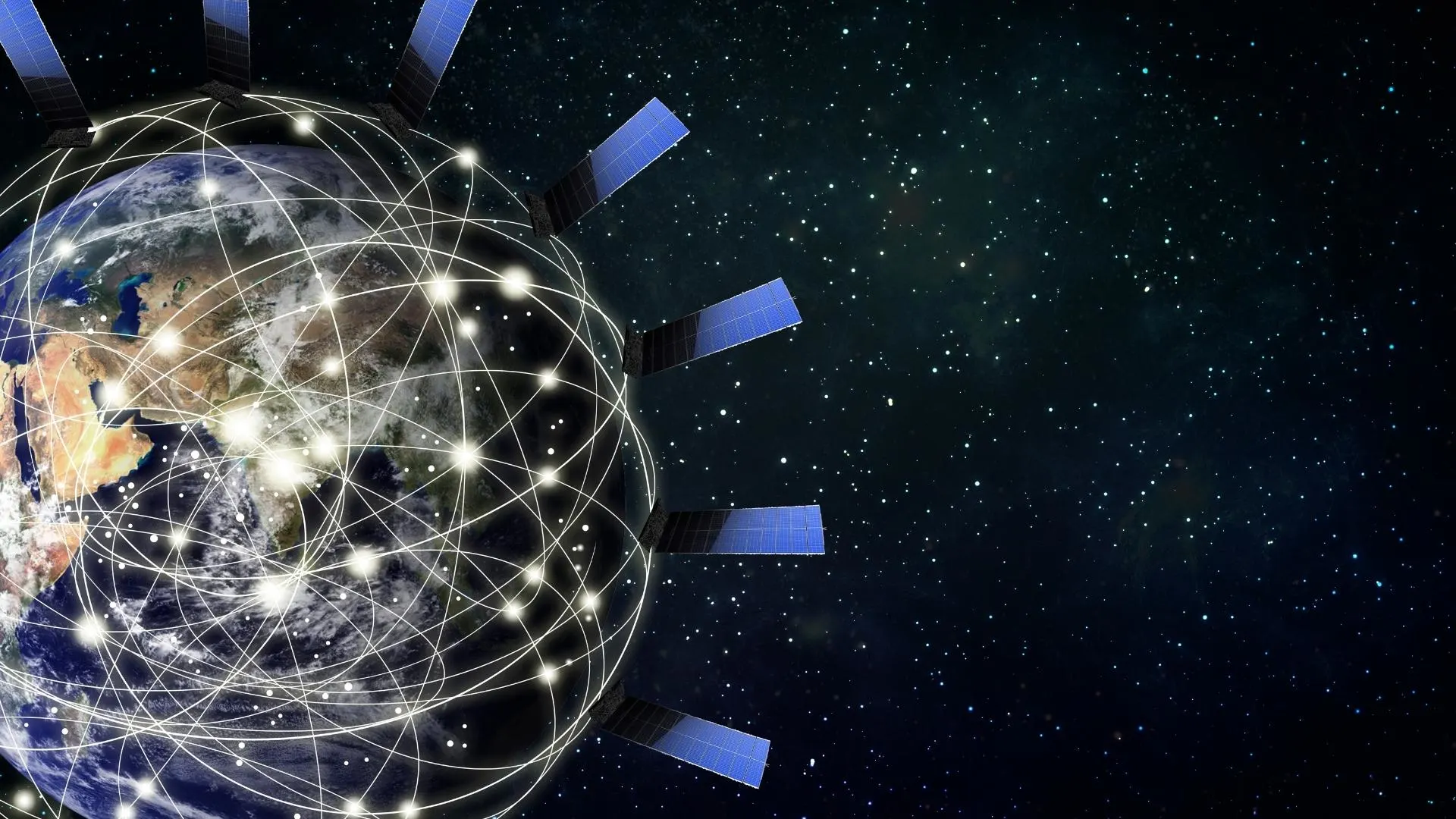
This is a photo rendering illustrating the concept of internet satellites orbiting Earth.
Let’s take a look at the benefits and disadvantages of Starlink RV internet.
What Are the Benefits of Starlink RV Internet?
There are some very promising features that many RVers will surely find beneficial:
Internet Anywhere
Foremost is the ability to connect to the internet from anywhere. As avid boondockers who’ve been known to boondock for weeks at a time in some pretty remote locations, this is an especially intriguing benefit from our perspective. In fact, it was our favorite feature of our old Hughes Satellite Internet dish (which was FAR slower than Starlink with much higher latency due to higher-altitude satellites). Cellular has improved dramatically over the years, but there are still many places where the signal is weak to non-existent (and that’s usually wherever WE want to be, LOL!).
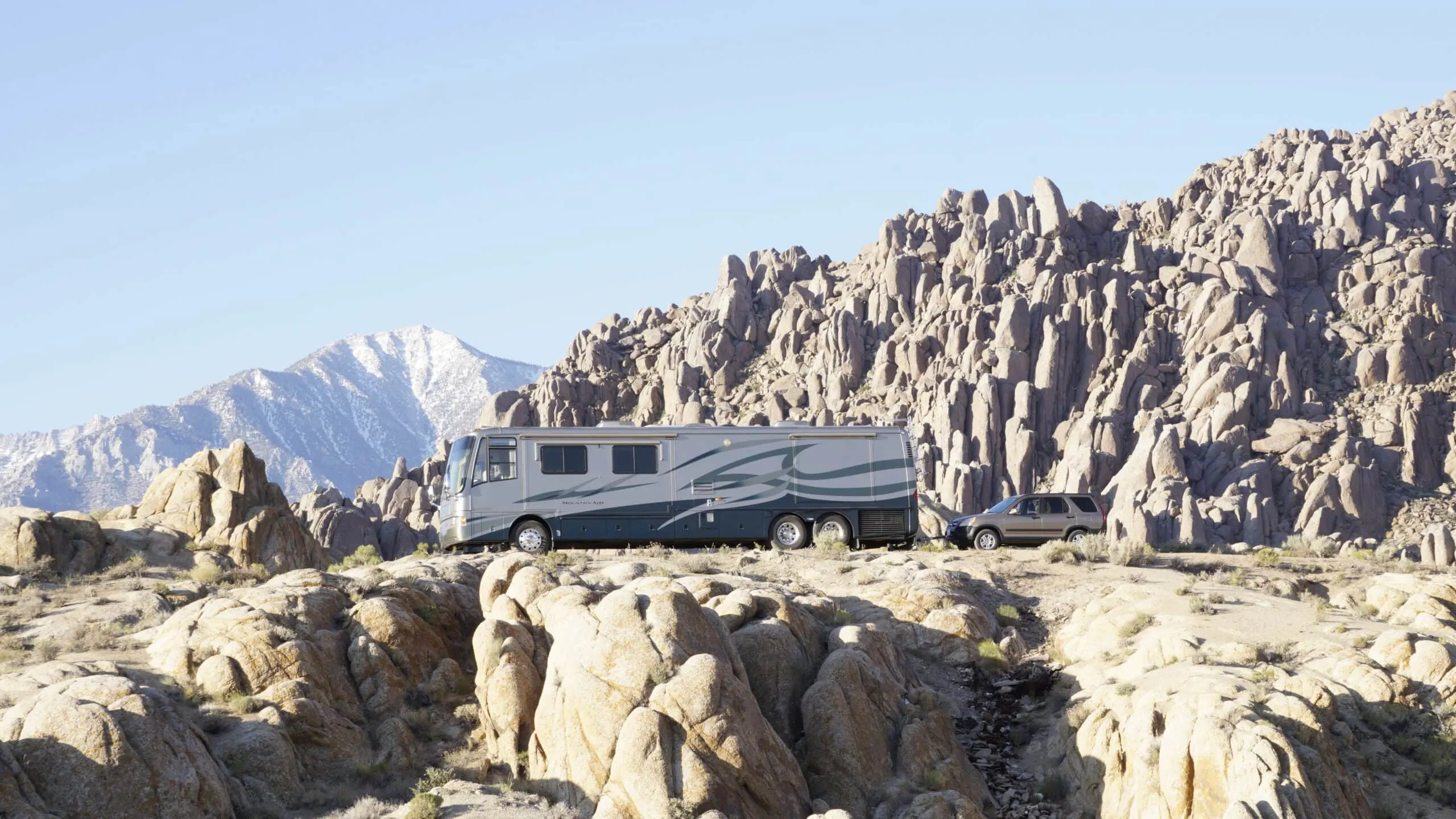
When we say we like to boondock in the middle of nowhere, we mean it. From our perspective, it’s actually the middle of everywhere – but sometimes that means being far away from cell towers, and that translates to weak signals.
Single Plan for Home and On the Road
You can have a single Starlink plan that you use both at home and on the road. Buy one access kit from SpaceX and mount your dish at home. Then, when you’re ready to hit the road, you simply move it to your RV and continue to access the internet as you travel. That can provide some significant cost savings to having to have two plans, one for home and one for the road.
Unlimited Usage
Starlink’s Roam plan for RVers is a truly unlimited plan! Starlink Internet doesn’t (currently) count your data (or throttle it!) – you’re simply always connected and able to download, upload, and work as necessary without limitations.
In periods of peak demand, you may see slow-downs in your connection speed on the standard Roam plans. So, for those who have higher-speed needs, they also offer “Mobile Priority” plans with varying amounts of “priority” data, so you can pick and choose what works best for your needs.
No Service Contract
Starlink’s mobile data plans don’t come with service contracts, which means that you can pause your plan at any point to avoid paying when you no longer need the service. This option is great for seasonal RVers who may only need access to the service for set periods of time. Activate it before you leave, and put the plan on hold when you return.
In-motion Capable
The standard Starlink hardware is designed to be deployed once your RV is stationary. Which, for many people, is just fine. Cellular service can provide for your connectivity needs when on the road, and once you’ve arrived at your campsite you can setup your Starlink dish.
But for those who want their Starlink service to work while they’re in motion, the “Mobile Priority” plans (starting at $250/month) work in conjunction with different (more expensive, $2,500) flat-mount in-motion hardware. This enables you to use your Starlink Internet connection while driving down the road AND while parked.
Completely Separate from Your Cellular Plan
Your Starlink internet package is completely separate from your cellular plan. So, this means that not only are you not using up your cell data, you don’t need to increase data allotment on your cell plan when you travel.
Moreover, you can use your phone’s plan as a backup should you need it (for example, when you’re parked under trees in a forest).
For a primer on RV internet options see our post on mobile connectivity explaining the difference between cellular and WiFi.
What Are the Drawbacks of Starlink RV Internet?
Currently, there are several issues preventing Starlink RV Internet from being an RVer’s dream. Let’s take a look at what those are:
Expensive
Starlink Roam plans start at US$150 a month, with an upfront hardware fee of US$599 + shipping/handling (which for in-motion use, as mentioned above, goes up to $250/month with an initial hardware cost of $2,500). So, if you only camp on weekends (and/or for a couple of weeks in the summer), Starlink’s internet access will probably not prove to be the most reasonable option for you. Not only would it be an added expense, but your cell coverage may also serve your purposes just fine.

If you’re an occasional camper, Starlink’s internet access may not prove to be the most reasonable option for you due to the cost. This is especially true if a cellular connection generally serves your needs.
For those RVers who live and work full time in our RVs, Starlink may be more worth the cost IF it can truly provide constant reliable coverage just about anywhere.
This takes us to another drawback…
Requires a View of the Sky
Starlink internet does (of course) require a view of the sky to work. So again, parking under large trees (like if you want to help keep your RV cool in the summer) renders your Starlink internet insufficient at best.
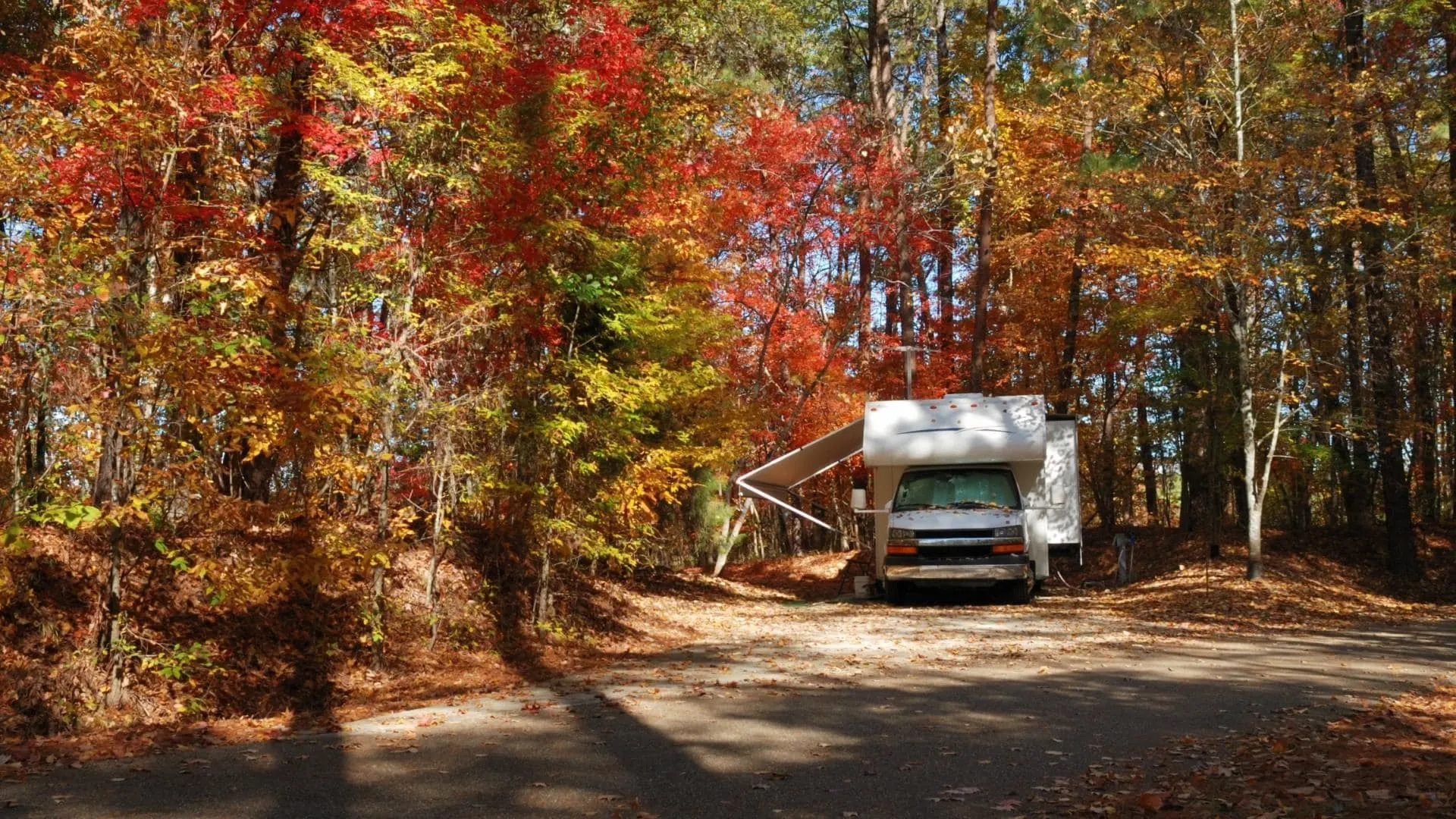
Starlink RV internet requires a view of the sky which, in some campsite settings, may not be available.
Using the standard (stationary) hardware, this isn’t TOO much trouble since the kit comes with 50′ of cable (and you can be longer, if you need it). This allows you to park under the trees, but position your satellite dish fairly far away where it can get a clear view of the sky.
NOTE: the in-motion system uses a flat-mount dish that is installed on the roof of your vehicle. In this situation, you’d have to move your RV out from beneath the trees to get service.
Satellite Constellation is Currently Incomplete
Because the Starlink internet satellite constellation is not yet complete, there are some “blips” in coverage when enough satellites aren’t in view. This will eventually be resolved but is currently considered a drawback for Starlink RV internet hopefuls. Especially if you HAVE to have a reliable, always-on connection for whatever it is you’re doing over the internet.
In our experience, the blips aren’t long enough to be too concerned about… but if you need always-on, uninterrupted internet connectivity, you may have some issues.
Latency
Latency (the delay between when your computer sends a request and when it arrives at its destination and vice versa) is currently greater with Starlink than it is with cellular (which, of course, is transmitting signals over much shorter distances), so for truly time-sensitive applications (like real-time trading applications), it may not be ideal.
Is Starlink the Internet Solution You’ve Been Waiting For?
So, tell us – have you been waiting with bated breath for the availability of Starlink internet? Are you one of many who’ve put down a deposit for regular service at home (when it becomes available) or for the premium Starlink service at your business, perhaps?
Let us know in the comments section below!
For us, so far, the best option for RV connectivity is our current setup (Note: we did end up adding Starlink to our arsenal for a trip into remote parts of the Baja in Mexico… and we loved it so much we’ve kept it):
But, that doesn’t mean we don’t have our eye on the skies for possible future upgrades! ???? Plus, there isn’t a one-size-fits-all answer for internet connectivity. So, as your needs change, the solution you use may need to change, too.
Geek Out With Us Every Week
Join our newsletter to learn about all things RV-related. Every week we offer free tips, tricks, product reviews, and more to our online community of RVers. So, whether this is your first time on the road or you’re a seasoned expert, we’d love for you to geek out with us!


John Mitchell
Tuesday 25th of April 2023
I have had Starlink for approx. 2 years and still LOVE it. I am stationary at my house. The day that my starlink weas delivered my land provider showed up for an install but I have had trouble with them over the years using their cell phone internet but I got lots of promises so I decided to go ahead with Starlink. I still love it. It may be a little more expensive, but it WORKS. I highly recommend it. It is hard to contact service but with patience you can. Again - I LOVE IT.
TheRVgeeks
Tuesday 25th of April 2023
Thanks for sharing your experience, John! Just got Starlink ourselves this winter (in preparation for a short trip into Mexico) and have been loving it, too!
Stephen Mendel
Tuesday 25th of April 2023
1. Starlink RV is up and available, the dish is rectangular. 2. $599.00 for equipment, shipping included, $150.00 monthly for service with ability to pause when needed. (Pause immediately if not installing and using right away or you will be charged) 3. A flat mount permanently installed dish that can be used while on the move is available but, it is $2500.00.
Bob Borst
Wednesday 15th of June 2022
We have had Starlink Residential for our home since January 2021. It has been outstanding and I fully documented our experience here:
https://community.ui.com/questions/Starlink-and-UniFi-Security-Gateway-Connectivity-Details/4b69ebe7-6405-4c1c-81df-95eba1d1ce81
We are currently testing Starlink RV for our future Castia RV which we will take delivery and pickup in early Spring 2023 in Rice, Texas. Our Starlink RV performs equally as well as our Starlink Residential, 250+ down and 10+ up in remote areas where the Starlink availability map shows no waiting list. In areas that show a waiting list, it performs at least half as well which is way more than we need to stream and project to a screen all of our desired programming (e.g., Britbox, Netflix, etc). It easy handles email, Internet surfing, texting and VOIP phone calling. We actually got rid of our expensive cell phones and plan shortly after we got Starlink Residential which saved us a significant monthly expense as described in above link.
The biggest issue or limitation with Starlink is that you absolutely need a clear view of the sky and performance quickly degrades as your clear view of the sky degrades (i.e., sky blocked by buildings, mountains or trees). Nevertheless, I fully expect Starlink RV will become a big hit for RVers, especially those who get out of cell coverage areas or just want to transition away from high cell phone expense and take advantage of free Wi-Fi VOIP now that Starlink makes Wi-Fi available everywhere.
Cheers, Bob Borst
Julia
Sunday 10th of July 2022
@Bob Borst, do you have a feel for latency with the RV setup? My job is exclusively VoIP. I have no concerns about speed but I'm worried about the lag on calls. If love to see some actual data!
Tom Curtis
Wednesday 25th of May 2022
Starlink RV is now available for $135/mth plus the purchase of the equipment at $599. The good news is, the RV plan currently has no waitlist so it will ship right away and the better news is that the plan is month to month so you can pause it after your trips then restart at will. We just bought in last night and they say 2 weeks for delivery.
Me, my wife and our two grandsons (8&6) will be doing a 9K mile trip around the country in about 4 weeks so I will let you know how helpful or problematic Starlink is for us.
Rick
Tuesday 3rd of May 2022
I am glad you wrote this article. If you watch the other youtubers they talk about this being the best thing out there but what they don’t tell you is that it is not mobile yet. Thank you for telling us the whole story.